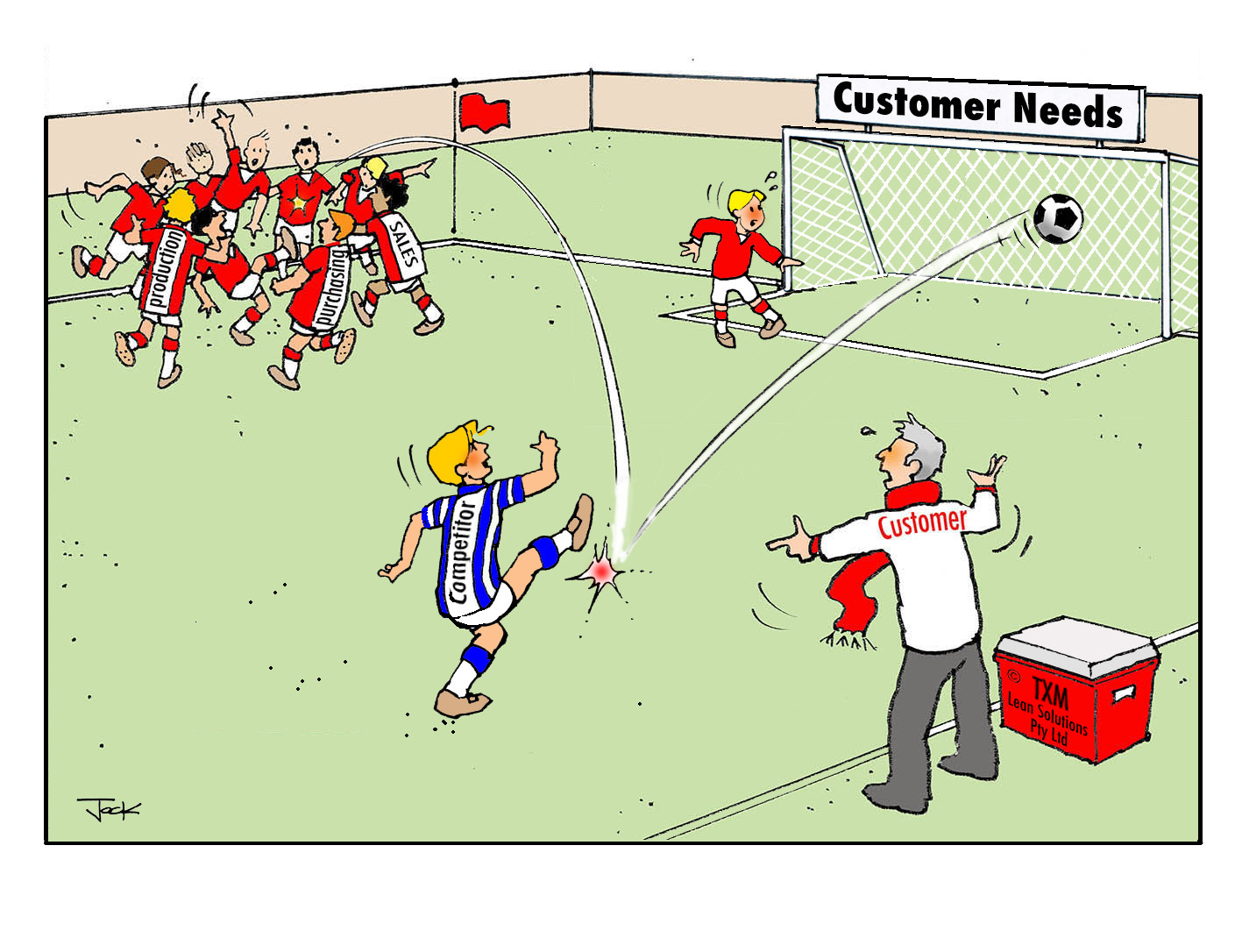It would be nice to think that people in an organisation could just organise themselves and work out what they have to do. In very small businesses, this is what happens. People just jump in and “do what needs to be done”.

However as businesses grow, they need to define a structure and roles within that structure. So what are the key tips to developing an effective organisational structure in your business? From my research and experience working with hundreds of businesses, there are five key points to consider:
1. Start with Your Value Stream
This is probably a bit unexpected as my first recommendation. However, I recommend you start by mapping your value stream. This means developing an end to end process map of the product and information flows involved to take your product or service through your business. When you develop your future state value stream map, you will find that the roles of key people quickly become clear. The advantage of starting this way is that aligns your organisation to your customer. It also highlights how you and your people create value for those customers.
2. Draw an Organisational Chart
It might sound blindly obvious, but I am surprised by the number of companies that do not have an organisational chart. Just mapping out your organisation on paper can highlight overlapping or duplicated roles and imbalances in resources. It will force you to start making decisions about who does what. A key tip in developing the organisational chart is to try and draw the ideal chart first (based on what you learn from your value stream map).
Then fit the people you have to the organisational chart. Usually the new roles and your existing people will align fairly easily. You might also highlight roles you are lacking or mis-matches between the skills you have in your organisation and the skills you need. This can then be a focus for future training and recruitment.
3. Consider Span of Control
Span of control is simply the number of people that report to each leader in your business. There is a lot of research about the optimum span of control. The general consensus is that around six to seven direct reports is the ideal number. For front line team leaders, the ideal is a little more, maybe 7-12. Increase the span of control too much and leaders do not have time to support their individual team members. We frequently see supervisors with 20 people reporting to directly to them. In this case much time gets wasted as the team waits for support from their leader.
Morale often suffers because issues don’t get followed up. Staff feel “nothing ever changes around here”. Often informal leaders emerge who can be a negative influence. Supervision of issues such as safety suffers. If the span of control is too narrow, then leaders become ineffective. In the worst case we see leaders with just one direct report. Everything the leader wants to do then becomes dependent on that one person. Narrow spans of control also lead to overly tall organisational structures which add to overheads and impede communication.
4. Take the Time to Write Job Descriptions
It can be a painful task, but writing job descriptions helps you to define what you want each role to deliver. Consider objectives and outcomes of the role as well as listing the main tasks and responsibilities of that employee. By defining job descriptions, you will need to think about the people you need, the skills they need to have and how they interface with others. Make sure you write the job description around the role, not the person. The role of an individual will often “evolve” over time. In growing businesses this might be driven by that person’s particular interests and capabilities or by historical factors.
Starting with your value stream means that you will define the roles based on the business needs, not who you already have. You can then progressively align your people to these roles. Of course if you are going to hire someone new, always write a job description first. It will help you define what you want, enable you to be clear in the interview process and ensure that the new person starts off on the right foot.
5. Keep it Simple
Do not complicate your organisational structure. Avoid multiple reporting lines, dotted lines and “matrix organisations”.
These make sense (sort of) for multi-billion dollar global corporations with tens of thousands of employees in dozens of countries. However they can create confusion and dilute accountabilities. These structures also encourage company politics as rival organisational streams compete for power (e.g. functional managers vs. business unit managers vs. country managers).
Conclusion
Keep the number of layers to an absolute minimum. This means going to the maximum span of control at each level if you can. Every layer you add represents additional overhead and another communication hand off. The more layers you add, the more difficult becomes to ensure clear communication up and down the organisation. So the people at the bottom don’t understand the vision and the people at the top have no idea of what is going wrong at the front line.
Follow these five tips and you will be off to a great start to build an effective organisation to support the growth of your business.





